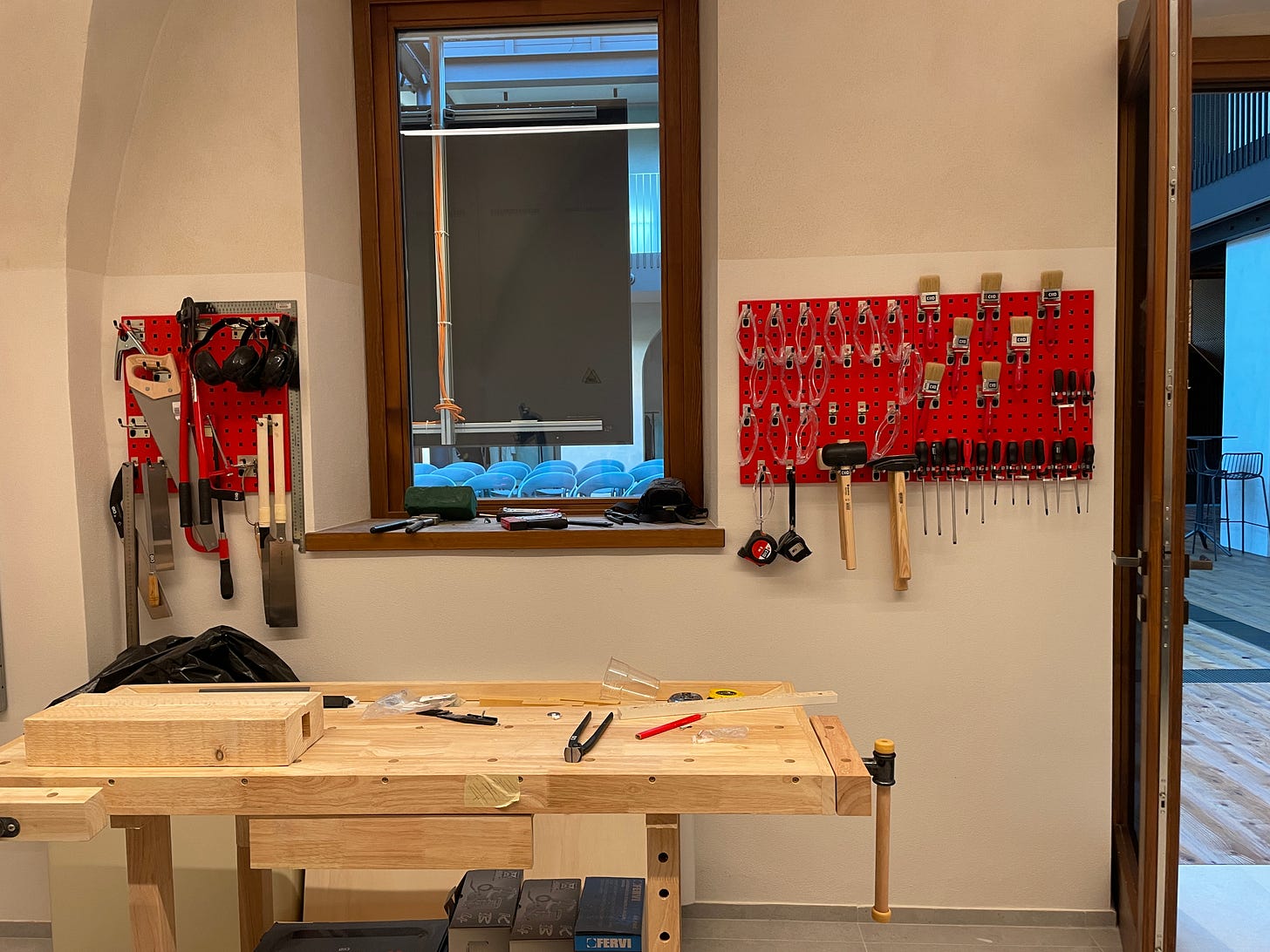I’m spending the week in Bergamo, teaching service design to the Copenhagen Institute of Interaction Design (CIID) students. Nestled in a valley rich with history, their new campus breathes a quiet tension between the past and the future. It’s an ancient monastery, standing since 1107, now transformed into a vibrant space dedicated to design, technology, and sustainability.
The setting alone is inspiring, but what struck me most was a conversation with Simona Maschi, co-founder of CIID. Simona is one of those rare people who seems to attract the extraordinary, collecting experiences and stories that feel almost magical. We walked through the beautifully renovated, tastefully furnished school when I casually remarked on a sofa.
"Nice sofa," I said.
"Oh, that was donated by a local manufacturer," she replied.
I was intrigued. Then came the chairs, tables, and even the kitchenware—donated, upcycled, and repurposed. Not a single piece was newly purchased. Even Mister Bodum himself had sent a collection of iconic French presses.
I had to ask: "How did you convince all these people to donate so much?"
Simona's answer stopped me in my tracks:
"I never asked for anything. I told them our story. They wanted to be part of it so they found their role in it."
She repeated this idea throughout the week. No targeted requests, no begging for resources—just a compelling story that people could see themselves in. And because they saw themselves in it, they gave freely. Some went beyond what was needed, offering not just materials but support, connections, and expertise.
It made me realise that this is the secret to meaningful change.
Not transactions. Not persuasion. But narratives that invite participation.
The stories we tell shape the future
We often approach change by thinking in terms of tactics: how to convince, persuade, and negotiate. But what if the real key is to articulate a vision so compelling that others want to participate in it?
We see it in movements, in businesses that build communities, in grassroots initiatives that catch fire. The most powerful projects don’t start with a detailed roadmap—they start with a story worth believing in.
So, I couldn’t help but ask myself:
What is my story?
And more importantly, what is yours?
If you want to create something meaningful, start with your story. Tell it in a way that invites others in—not as spectators but as co-authors. Because when people find a place in your story, they don’t just support it.
They make it their own.






Stone soup!